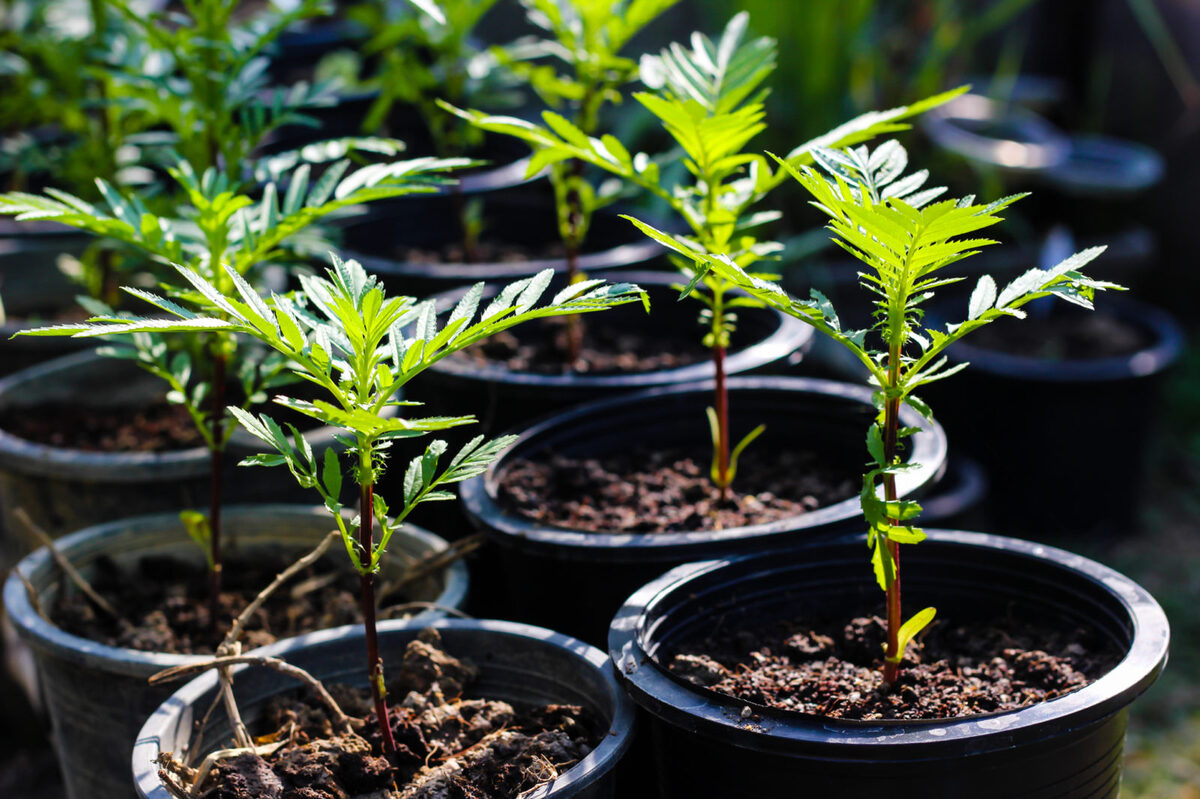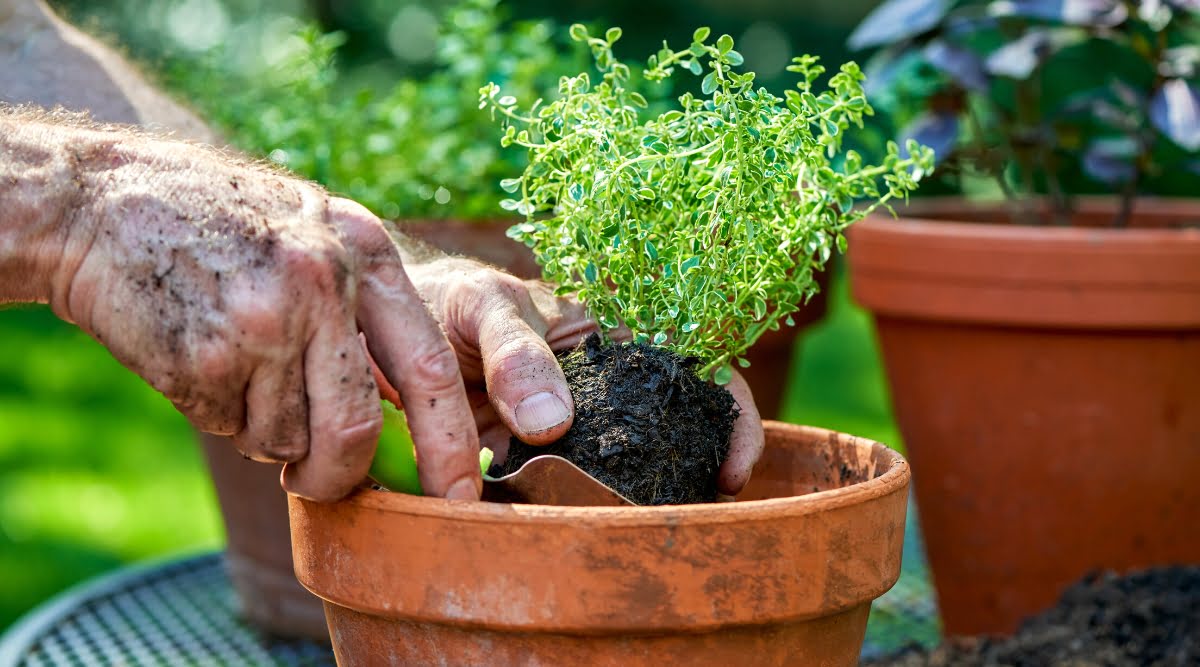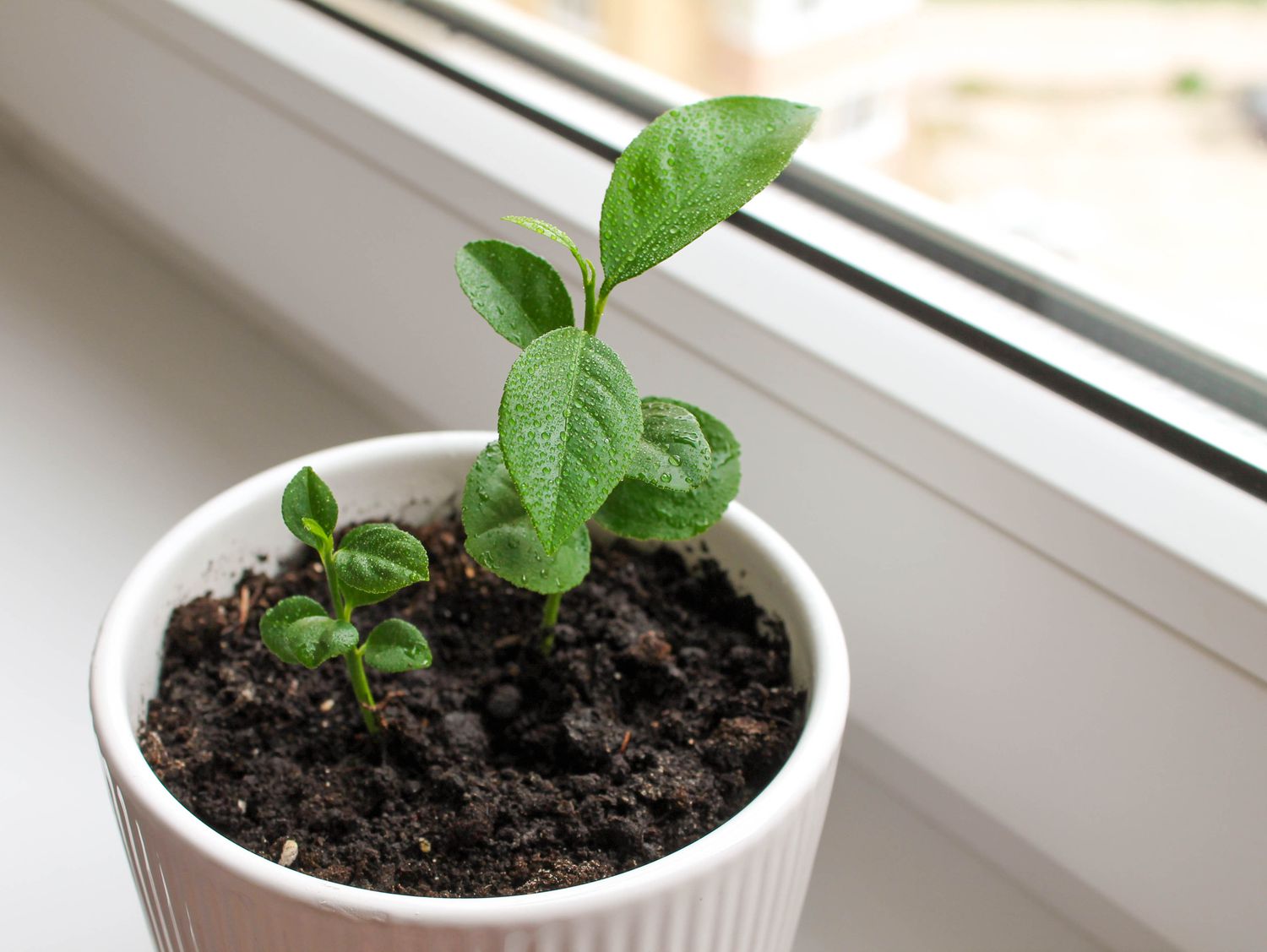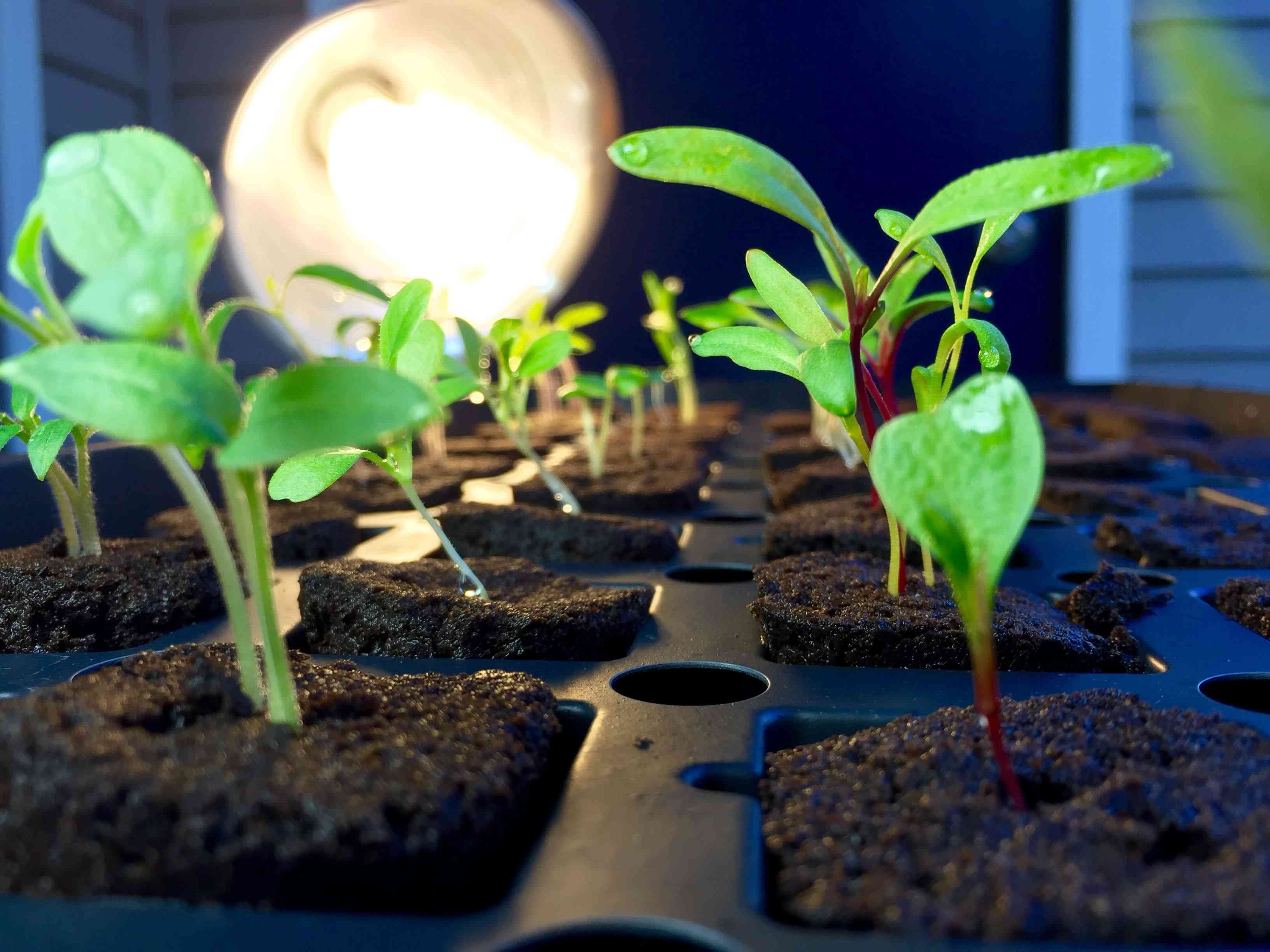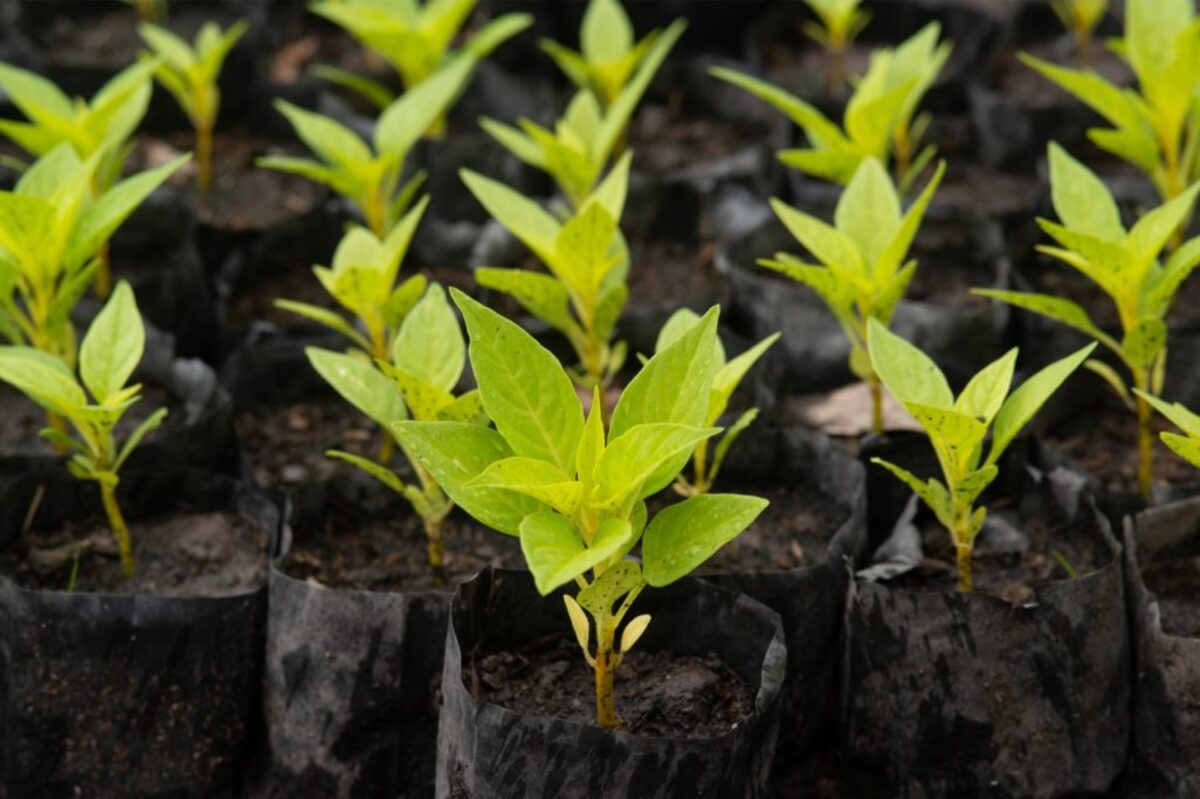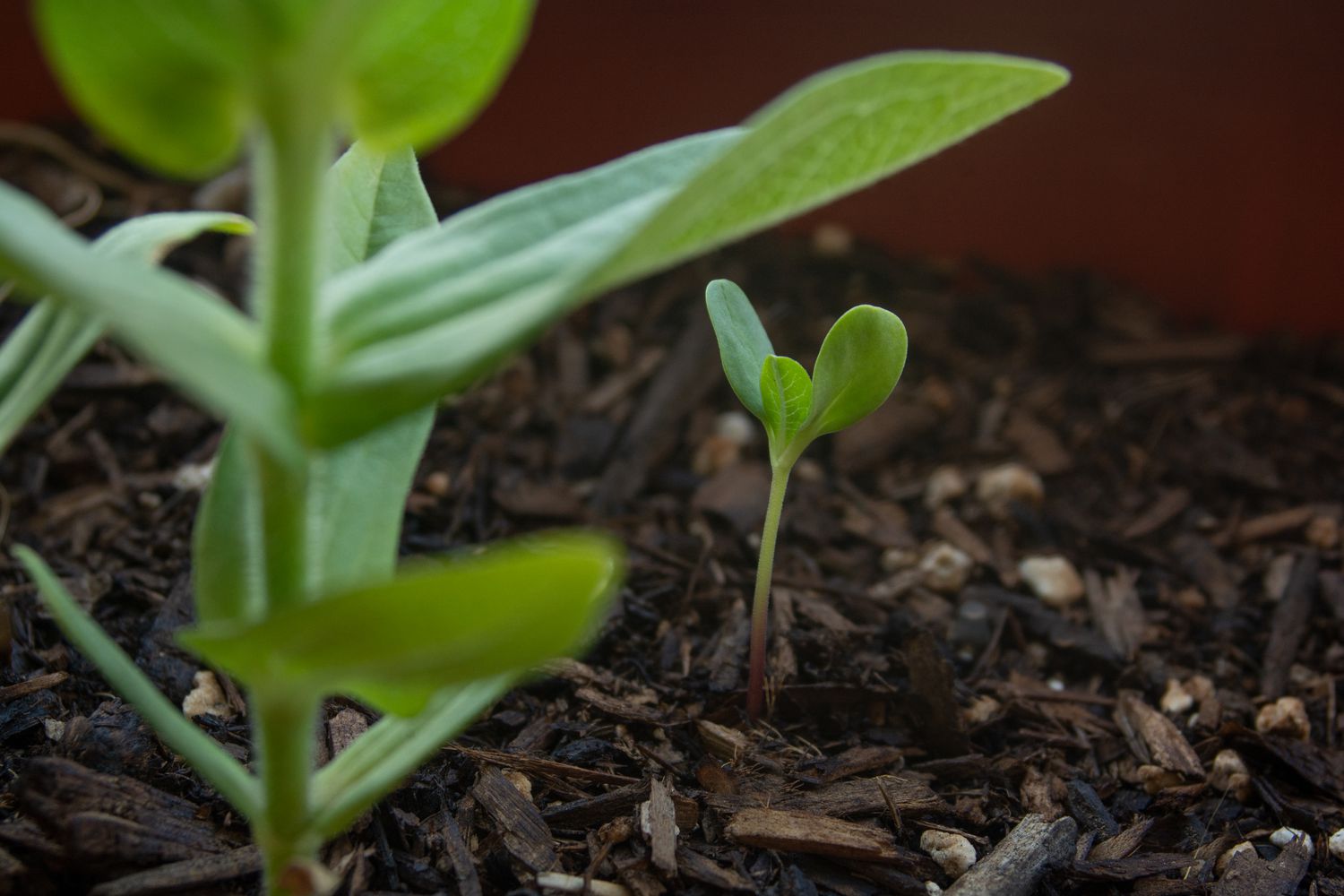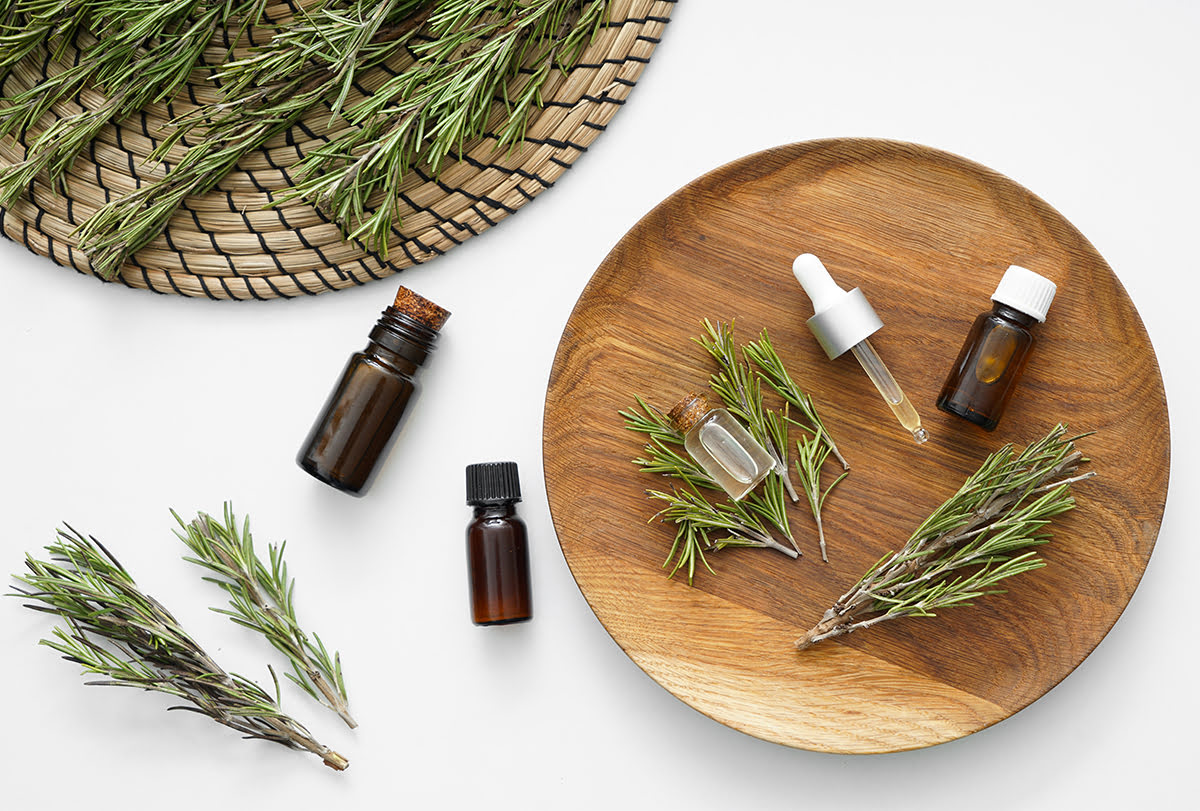Home>Types of Gardening>Edible Gardening>When Should I Transplant My Sunflower Seedlings
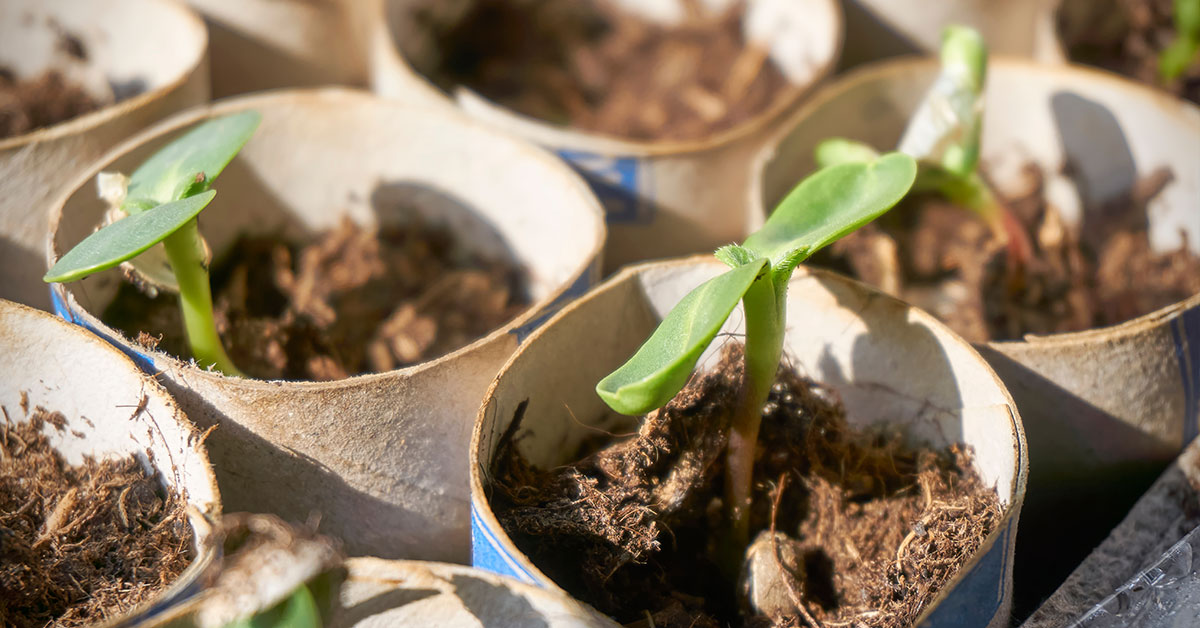

Edible Gardening
When Should I Transplant My Sunflower Seedlings
Modified: February 10, 2024
Learn when to transplant your sunflower seedlings in your edible garden. Discover the best timing for successful growth and a bountiful harvest.
(Many of the links in this article redirect to a specific reviewed product. Your purchase of these products through affiliate links helps to generate commission for Chicagolandgardening.com, at no extra cost. Learn more)
Table of Contents
Introduction
Welcome to the world of edible gardening! There’s something truly rewarding about growing your own food, and one of the most popular plants to cultivate in home gardens is the sunflower. With their vibrant blooms and towering stalks, sunflowers are not only a beautiful addition to any garden but also produce nutritious seeds that can be enjoyed as a snack or used in cooking. However, successfully growing sunflowers requires careful attention to the transplanting process.
In this article, we’ll explore the key factors to consider before transplanting your sunflower seedlings into the garden. Timing and technique play crucial roles in the plants’ ability to thrive and produce an abundant harvest. By understanding the optimal conditions for transplanting and following some essential guidelines, you’ll set your sunflowers up for success.
Transplanting sunflower seedlings can be a delicate process. These young plants, usually started indoors, need the right conditions to establish themselves in the garden. It’s essential to consider factors such as the stage of seedling development, outdoor temperatures, soil moisture, texture, and sunlight requirements.
Before you get your hands dirty, take a moment to assess these factors and ensure your sunflowers have the best chance of thriving once transplanted. By being proactive and following proper transplanting techniques, you’ll be on your way to a bountiful sunflower harvest that will bring joy and beauty to your edible garden.
Factors to Consider Before Transplanting Sunflower Seedlings
Transplanting sunflower seedlings is a crucial step in their growth journey, and several factors need to be considered to ensure their successful establishment in the garden. By taking these factors into account, you can provide the optimal conditions for your sunflowers to flourish:
1. Seedling Development Stage: It’s important to transplant sunflowers at the right stage of development. Generally, seedlings should have developed their first true leaves and have a strong root system before being moved to the garden. This usually occurs when the seedlings are 2-3 weeks old. Transplanting them too early can result in shock, while transplanting them too late can lead to stunted growth.
2. Outdoor Temperature and Frost Dates: Sunflowers are warm-season plants and are sensitive to cold temperatures. It’s crucial to wait until the danger of frost has passed before transplanting them into the garden. Check the frost dates for your region and ensure the overnight temperatures consistently stay above 50°F (10°C). Planting sunflowers in frost-prone conditions can result in damage or even death of the seedlings.
3. Soil Moisture and Texture: Sunflowers thrive in well-draining soil. Before transplanting, make sure the soil in your garden is moist but not waterlogged. If the soil is excessively wet, it can lead to root rot and hinder the growth of your sunflowers. Additionally, sunflowers prefer loamy soil with a slightly acidic to neutral pH level (around 6.0-7.5). Prioritize preparing the soil by loosening it and adding organic matter for optimal growing conditions.
4. Sunlight Requirements: Sunflowers are true sun-lovers and require full sun to thrive. Ensure that the designated planting area receives at least six to eight hours of direct sunlight each day. Planting sunflowers in insufficient sunlight can result in weak and floppy stems, smaller blooms, and decreased seed production.
Taking these factors into consideration will significantly increase the likelihood of your sunflower seedlings flourishing in the garden. The next step is to learn the proper technique for transplanting sunflowers, which we will discuss in the following section. By following the correct transplanting practices, you can minimize transplant shock and give your sunflowers the best start for a successful growing season.
Seedling Development Stage
Timing is crucial when it comes to transplanting sunflower seedlings. To ensure a successful transition from indoor to outdoor growing conditions, it is important to consider the seedling development stage.
Before transplanting, sunflower seedlings should have developed their first true leaves. These true leaves are the second set of leaves that emerge after the initial cotyledon leaves. The cotyledon leaves, also known as seed leaves, are the first set of leaves that appear after germination and serve as a temporary source of nutrients for the seedling.
Once the first true leaves have fully emerged, the sunflower seedlings are ready for transplanting. This usually occurs when the seedlings are approximately 2-3 weeks old. At this stage, the seedlings have established a strong root system, which is essential for their survival and growth in the garden.
Transplanting sunflower seedlings too early can put them at risk of transplant shock. Additionally, if the seedlings are not developmentally ready, they may struggle to adapt to the outdoor environment, leading to stunted growth and poor productivity.
Transplanting sunflower seedlings that are too old, on the other hand, can also be detrimental. Older seedlings may have a harder time adjusting to the new planting site and may experience more transplant shock. Additionally, they may be more root-bound, with tangled and circling roots that can hinder future growth.
It’s important to strike the right balance by timing the transplanting process when the seedlings are at the ideal developmental stage. This will give them the best opportunity to establish themselves quickly and thrive in the garden.
By paying attention to the development stage of your sunflower seedlings, you can ensure a smoother transition from indoor to outdoor growing conditions, giving your sunflowers the best chance for success.
Outdoor Temperature and Frost Dates
When it comes to transplanting sunflower seedlings, outdoor temperature and frost dates play a crucial role in determining the right timing. Sunflowers are warm-season plants and are sensitive to cold temperatures, especially frost. Therefore, it is essential to wait until the danger of frost has passed before transplanting them into the garden.
The first step in determining the appropriate timing is to know the average last spring frost date for your specific region. This information can be obtained from local gardening resources or online databases. The average last frost date serves as a general guideline for when it is safe to plant frost-sensitive plants, such as sunflowers, outdoors.
Typically, sunflowers should not be transplanted until the overnight temperatures consistently stay above 50°F (10°C). Planting sunflowers when the temperatures drop too low can result in cold damage and even death of the young seedlings. It is crucial to monitor the weather forecast and ensure a stable warming trend before proceeding with the transplanting process.
Even after the average last frost date has passed, keep an eye out for any unexpected late frosts. In some regions, unexpected cold snaps can occur even after the typical frost-free date. Protect your sunflower seedlings by covering them with frost blankets or plastic containers if frost is in the forecast, particularly during their vulnerable early growth stages.
Transplanting sunflower seedlings when the outdoor temperatures are consistently warm ensures that they will not experience shock from cold stress. This promotes healthy growth and development, enabling the sunflowers to establish themselves in the garden more successfully.
By paying attention to the outdoor temperature and frost dates specific to your region, you can time the transplantation of your sunflower seedlings appropriately. This will provide them with the optimal growing conditions, ultimately leading to stronger and healthier sunflowers.
Soil Moisture and Texture
The moisture and texture of the soil are critical factors to consider before transplanting sunflower seedlings. Creating the right growing environment for your sunflowers will promote their overall health and vitality.
Ideal soil moisture is essential for the successful establishment of sunflower seedlings. Before transplanting, it’s important to ensure that the soil in your garden is moist, but not overly saturated. If the soil is too wet, it can lead to root rot and hinder the growth of your sunflowers. On the other hand, if the soil is too dry, the seedlings may struggle to establish themselves and may suffer from dehydration.
Before transplanting, water the planting area thoroughly and allow excess water to drain. This ensures that the soil is adequately moist and ready for the sunflower seedlings. It’s important to strike the right balance, providing sufficient moisture without creating waterlogged conditions.
The texture of the soil is another crucial consideration. Sunflowers thrive in well-draining soil, which allows for proper air circulation and prevents water from pooling around the roots. Loamy soil is considered ideal for sunflowers, as it provides a good balance of drainage and moisture retention. A loamy soil texture also allows roots to penetrate easily, facilitating nutrient uptake and overall plant growth.
Prior to planting, prepare the soil by loosening it with a garden fork or tiller. This will help improve the texture and break up any compacted areas. Additionally, you can incorporate organic matter, such as compost or well-rotted manure, into the soil. Organic matter improves soil structure, enhances water retention, and promotes nutrient availability, creating a more favorable environment for sunflower growth.
Testing the soil’s moisture and texture is an essential step in preparing for sunflower transplanting. By ensuring optimal soil conditions, you provide the sunflower seedlings with the best chance of thriving in their new garden home.
Sunlight Requirements
Providing adequate sunlight is crucial for the successful growth and development of sunflower plants. Sunflowers are known for their love of the sun and require full sun exposure to thrive.
Before transplanting your sunflower seedlings into the garden, it’s important to choose a planting location that receives at least six to eight hours of direct sunlight each day. Without sufficient sunlight, sunflowers may exhibit weak stems, smaller blooms, and a reduced seed production.
When selecting a site for transplanting, consider any potential obstructions that may cast shadows on your sunflowers. Trees, buildings, or tall structures that block sunlight can significantly impact the growth and productivity of your sunflowers. Ensure that your chosen location provides uninterrupted sunlight throughout the day.
In addition to the duration of sunlight, the quality of the light is also important. Sunflowers prefer bright, direct sunlight as opposed to filtered or dappled light. Sunflowers are known to orient themselves to face the sun, a phenomenon known as heliotropism. This behavior maximizes their exposure to sunlight and aids in their growth and development.
Keep in mind that as the sun moves across the sky, the angle of the sunlight changes. Consider this when selecting your planting location and ensure that your sunflowers receive the most intense sunlight during the peak hours of the day, usually between 10 am and 4 pm.
Proper sunlight exposure is essential for sunflowers to produce strong stems, big, vibrant blooms, and abundant seeds. By selecting a sunny spot and ensuring your sunflower seedlings receive the required hours of direct sunlight, you set the stage for a successful and visually stunning sunflower garden.
Transplanting Technique
Transplanting sunflower seedlings requires careful attention to detail and proper technique to ensure their successful establishment in the garden. Here are the key steps to follow:
1. Preparing the Planting Hole: Before transplanting, dig a hole in the garden that is slightly larger and deeper than the root ball of the sunflower seedling. This will provide enough space for the roots to spread out and establish themselves.
2. Gently Removing Seedlings: Carefully remove the sunflower seedlings from their containers, being cautious not to damage the delicate roots. Gently loosen the roots if they appear root-bound or tangled.
3. Placing the Seedling in the Hole: Place the sunflower seedling into the planting hole, ensuring that it sits at the same depth as it was in its original container. Avoid burying the seedling too deep as it can hinder its growth and potentially lead to rotting.
4. Backfilling and Firming the Soil: Fill in the hole around the sunflower seedling with soil, gently tamping it down to eliminate any air pockets. Make sure the soil is in contact with the roots to promote proper nutrient and water uptake.
5. Watering Thoroughly: After transplanting, water the seedling thoroughly to settle the soil and provide necessary moisture. This helps to establish good root-to-soil contact and reduces transplant shock.
6. Mulching: Apply a layer of organic mulch, such as straw or wood chips, around the base of the sunflower seedling. Mulching helps to conserve moisture, suppress weed growth, and regulate soil temperature, providing a more favorable growing environment for the sunflower.
7. Providing Support (if necessary): Depending on the variety, size, and expected height of your sunflowers, you may need to provide support such as stakes or trellises to prevent them from falling or leaning as they grow taller. This step is especially crucial for larger varieties with heavy flower heads.
By following these transplanting techniques, you can ensure the successful transition of your sunflower seedlings from their nursery containers to the garden. Taking the time to transplant them correctly will promote healthy root development and ultimately lead to sturdy, vibrant sunflower plants.
Tips for Successful Transplanting
Transplanting sunflower seedlings can be a delicate process, but with these helpful tips, you can ensure their successful transition from the nursery to your garden:
1. Harden off Seedlings: Before transplanting, gradually acclimate your sunflower seedlings to outdoor conditions by exposing them to increasing amounts of sunlight, wind, and temperature fluctuations. This process, known as hardening off, prepares the seedlings for the change in environment, reducing the risk of transplant shock.
2. Choose the Right Planting Time: Timing is key when transplanting sunflower seedlings. Avoid planting them during periods of extreme weather conditions, such as heatwaves or heavy rainfall. Optimal planting times are typically during mild, calm weather conditions.
3. Water Seedlings Properly: Keeping the soil evenly moist before transplanting is important, but avoid overwatering. Overly saturated soil can lead to root rot and other issues. After transplanting, continue watering regularly, keeping the soil moist but not waterlogged.
4. Space Seedlings Appropriately: When transplanting sunflowers, ensure adequate spacing between plants. Depending on the variety, sunflowers require at least 1 to 3 feet of space between each plant. Proper spacing allows air circulation and prevents overcrowding, which can lead to disease and inhibit growth.
5. Protect Seedlings from Pests: Young sunflower seedlings can be vulnerable to pests such as slugs, snails, and insects. Consider using organic pest control methods like companion planting or organic repellents to protect your sunflowers from potential pests.
6. Monitor Soil Conditions: Regularly check the moisture level and overall health of the soil around your sunflower seedlings. Adjust watering and nutrient application as needed to keep the soil in optimal condition for healthy growth.
7. Provide Adequate Support: As your sunflowers grow taller, provide support in the form of stakes, cages, or trellises. Proper support prevents the stems from bending or breaking under the weight of the flower heads and ensures that the plants grow upright.
8. Remove Weeds: Weeds compete with sunflowers for nutrients and resources. Regularly remove weeds from the planting area to prevent them from stifling the growth of your sunflower seedlings.
By following these tips, you can increase the chances of successful transplantation and provide your sunflowers with the best conditions for growth and productivity. Happy gardening!
Conclusion
Transplanting sunflower seedlings is a critical step in their journey towards becoming healthy, vibrant plants in your garden. By considering factors such as the seedling development stage, outdoor temperatures, soil moisture and texture, and sunlight requirements, you can create the optimal conditions for successful transplantation.
Timing is crucial when it comes to transplanting sunflowers. Wait until the seedlings have developed their first true leaves and the danger of frost has passed. This ensures that the plants are developmentally ready and protected from cold temperatures.
The moisture and texture of the soil play a significant role in the growth and establishment of sunflower seedlings. Ensure the soil is moist but not waterlogged, with a loamy texture for improved drainage and nutrient availability.
Sunflowers thrive in full sunlight, so choose a planting location that receives at least six to eight hours of direct sunlight each day. Proper sunlight exposure enhances stem strength, bloom size, and seed production.
When it comes to transplanting technique, handle the seedlings with care, plant them at the appropriate depth, firmly pack the soil, and provide sufficient water and mulch for moisture retention. Providing support and protecting the seedlings from pests are also crucial for their long-term success.
By following these guidelines and incorporating these tips, you can increase the likelihood of successful sunflower transplantation and set the stage for a bountiful harvest of beautiful blooms and nutritious seeds. Enjoy the journey of growing your own sunflowers and experiencing the rewards of edible gardening!
